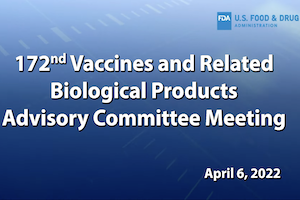FDA proposes framework for updated COVID vaccines to spur discussion
 Biologics/ biosimilars/ vaccinesClinical TrialsHealth Authority meeting and communication strategyNorth AmericaRegulatory Intelligence/PolicyResearch, Design and Development
Biologics/ biosimilars/ vaccinesClinical TrialsHealth Authority meeting and communication strategyNorth AmericaRegulatory Intelligence/PolicyResearch, Design and Development Biologics/ biosimilars/ vaccinesClinical TrialsHealth Authority meeting and communication strategyNorth AmericaRegulatory Intelligence/PolicyResearch, Design and Development
Biologics/ biosimilars/ vaccinesClinical TrialsHealth Authority meeting and communication strategyNorth AmericaRegulatory Intelligence/PolicyResearch, Design and Development